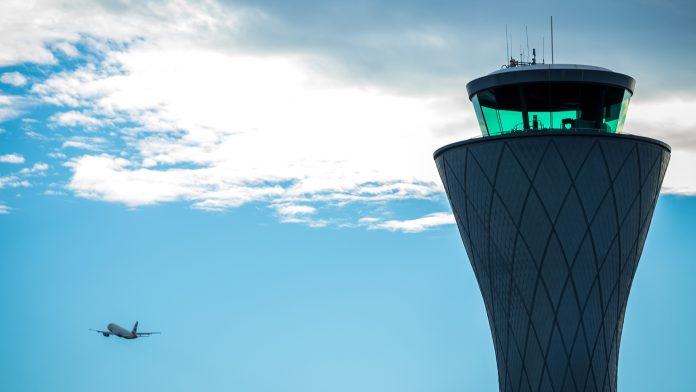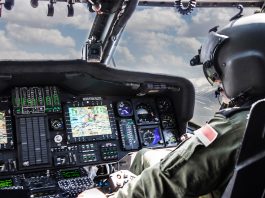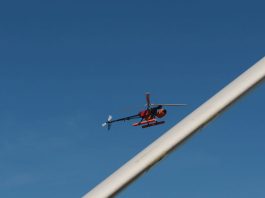Dr Luis Barbero, President and Chief Executive Officer of GATCO, discusses the impact of COVID-19 on the aviation and air traffic management industry.
The increasing integration of systems into daily operations is necessitating a change in the way air traffic management is undertaken. Meanwhile, the current COVID-19 pandemic is also introducing unprecedented changes into the industry. In an interview with The Innovation Platform, Dr Luis Barbero, President and Chief Executive Officer of GATCO – a professional body which represents the professional interests and opinions of those in the air traffic management profession – discusses some of these challenges and what we might expect to see in the future.
What is the current global state of air traffic control? How does is differ across regions and countries?
Pre-COVID, we were in a situation where demand for air travel had been increasing steadily around the world since the 2008 financial crisis. This resulted in an air traffic management system where capacity could not meet demand (mainly due to the lack of air traffic controllers) with the high level of delays we saw in 2019.
The situation was considerably worse in Europe compared to other parts of the world. The response to the financial crisis and the objective to reduce air traffic management cost by the European Commission resulted in a reduction/stop of training/recruitment so the staff shortages have been a lot more apparent in Europe.
We were essentially in a situation where air traffic controllers where in high demand and we could not train and qualify new controllers fast enough.
Post-COVID, the pandemic has changed the situation completely. Air traffic is down by 90% around the world compared to the same time last year. There is currently a surplus of air traffic controllers to cope with the very limited demand and it is not clear how demand for air travel will recover. Different studies talk about 12-18 months to get back to a new ‘normal’, and that normal could be an 80% of the peaks we saw in 2019. That already indicates that there could be less demand for air traffic controllers (COVID-19 has already stopped the training of air traffic controllers around the world) moving forwards.
There are, however, differences around the world, particularly in areas where the level of traffic has been historically low compared to other parts of the world. Africa, for instance, has more issues relating to the licensing of controllers, the availability of equipment and technology, and operational procedures. All of this would have evolved with the rise in air traffic in that continent. But that is going to change with COVID-19.
How have new technologies impacted air traffic management? How can professionals ensure that these new developments fit into their current operational environment?
New technologies and automation have been proposed by many stakeholders as solutions to the capacity and delay problems we were seeing in air traffic management until the arrival of the pandemic. We have experienced an increase use of technologies and automation in our workplaces in recent years and the trend was set to continue going forward.
However, the problem with some of those solutions is that they did not take into consideration the operational reality of our industry, resulting in suboptimal solutions which did not deliver the anticipated benefits to the operation or did not help controllers work more efficiently. Organisations like GATCO or IFATCA try to stay involved and keep abreast of any developments to ensure that expert operational input is provided to any project looking at introducing new technology into our working environment. There seems to be a perception that controllers are against change but, while human nature is to resist change to a certain extent, no controller would oppose having new technologies or new automation which would help them in their daily job.
In some aspects, the air traffic management industry is behind other industries like finance or telecommunications when it comes to the introduction of technology. But, of course, the safety requirements our industry understandably imposes on any new technology makes that introduction slower compared to other industries.
How can safety and regularity be achieved in both International Air Navigation and Air Traffic Control?
Aviation and air traffic control are very proud of the level of safety and regularity they have achieved. It is the safest mode of transportation and pilots and controllers go through extensive initial and continuation training to ensure they operate in accordance with stringent safety requirements.
In terms of regularity, there are differences in the way controllers operate around the world due to different operational procedures, different systems and equipment, etc. Standards have not been defined as much as in other industries, and that is one area where we need to play catch up.
Aviation is slightly different from air traffic control, since pilots can move from one airline to another and start operating the same aircraft pretty much from day one. The way different technologies are used by Air Navigations Service Providers (ANSPs) and the differences in airspace and procedures between States and ANSPs means that controllers require a significant amount of training when moving from employer to employer.
What are some of the challenges the air traffic management industry are currently facing? What does the next 20 years look like?
The challenges are going to be very different going forward compared to just six months ago, when the focus was on capacity, staffing levels and, in Europe, the implementation of the Single European Sky (although that problem is more political than anything else). The focus now is going to be in sustainability, funding, and new business models. All without forgetting the environmental impact of our industry.
In Europe we have seen how airlines are deferring the payment of route charges. Those charges are almost the only way ANSPs are funded, and if that money stops coming in, ANSPs cannot operate. While airlines can just cease to operate, the air traffic management services provided by ANSPs are part of the national critical infrastructure. In the absence of airlines, ANSPs continue to provide services to medical, military and cargo flights. But how can that happen if the airlines are not there to fund ANSPs? As such, there is a clear sense that this is going to be one of the main topics of discussion in Europe for the foreseeable future.
Dr Luis Barbero
President and Chief Executive Officer
GATCO – Guild of Air Traffic Control Officers
luis.barbero@gatco.org
Tweet @GatcoUK
www.gatco.org
Please note, this article will also appear in the second edition of our new quarterly publication.









